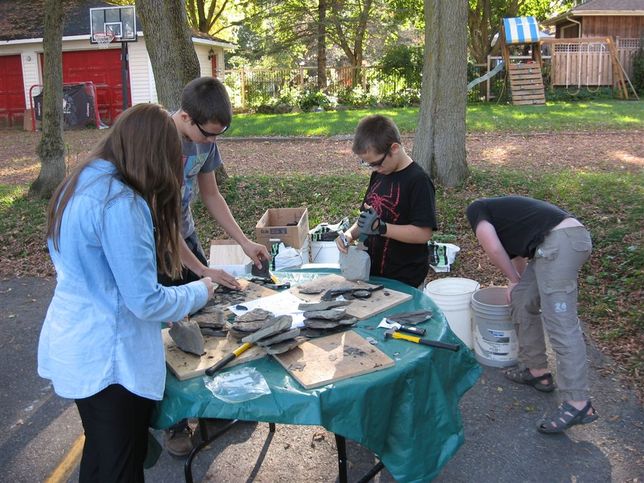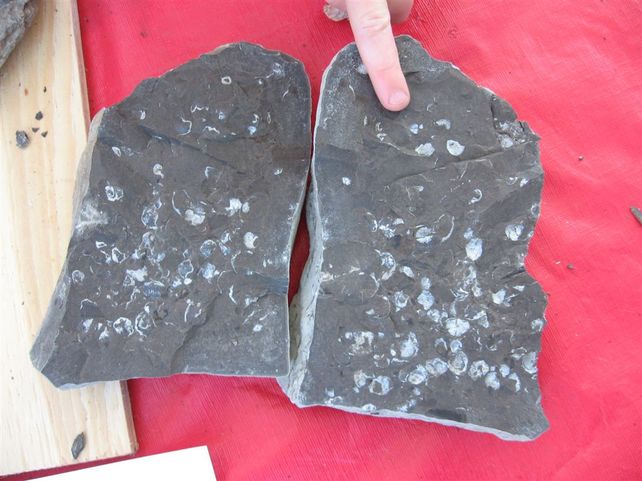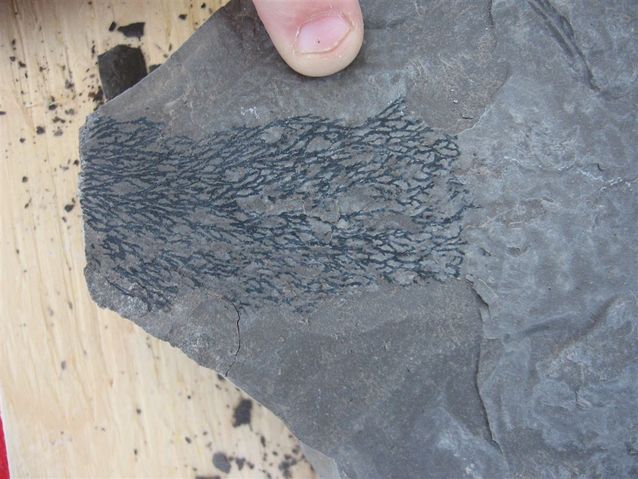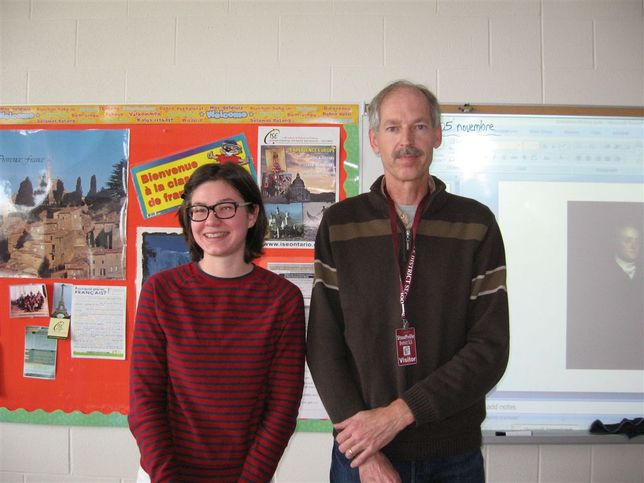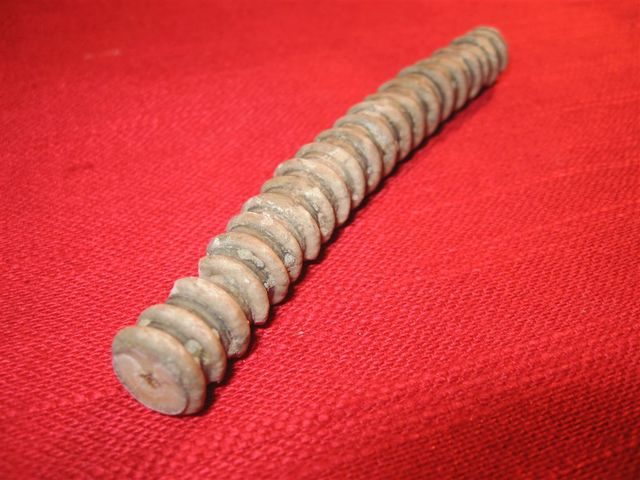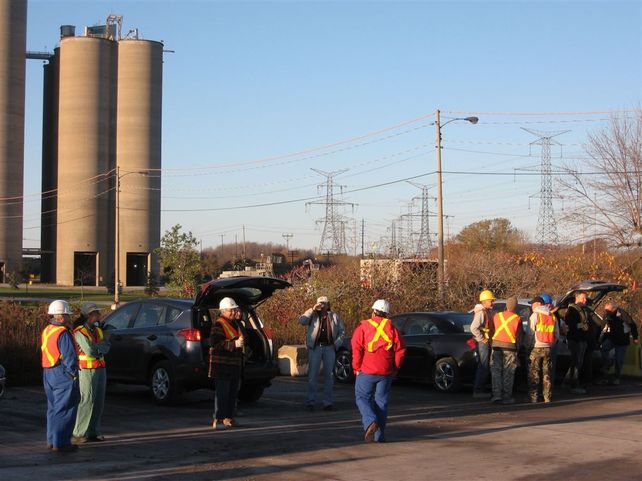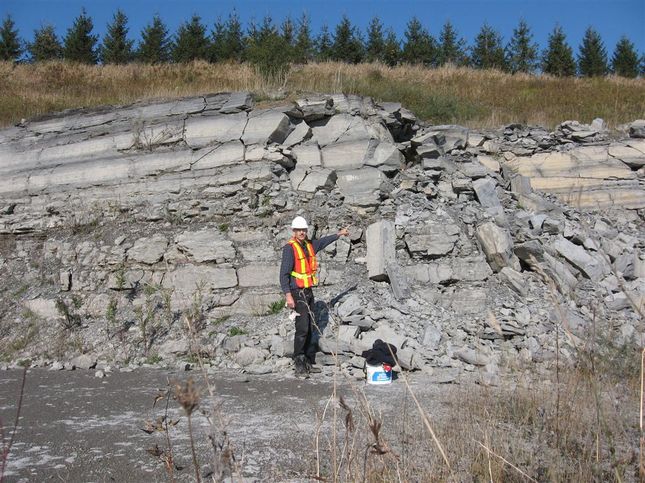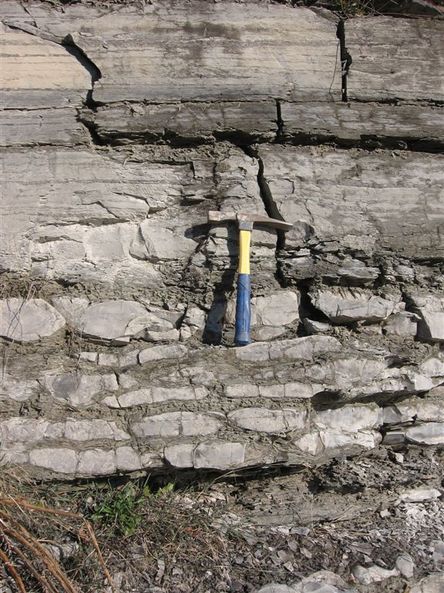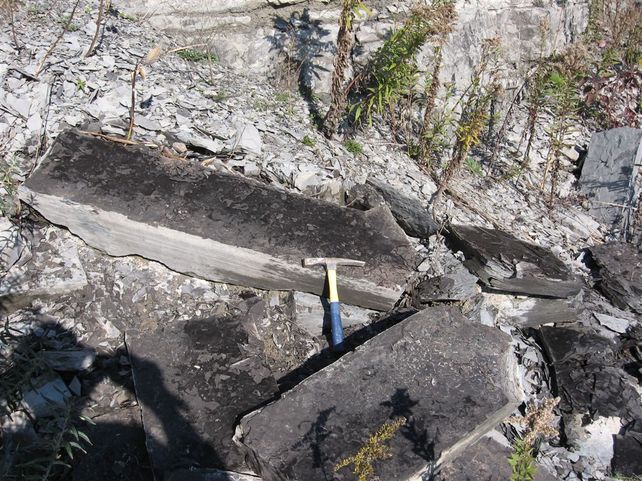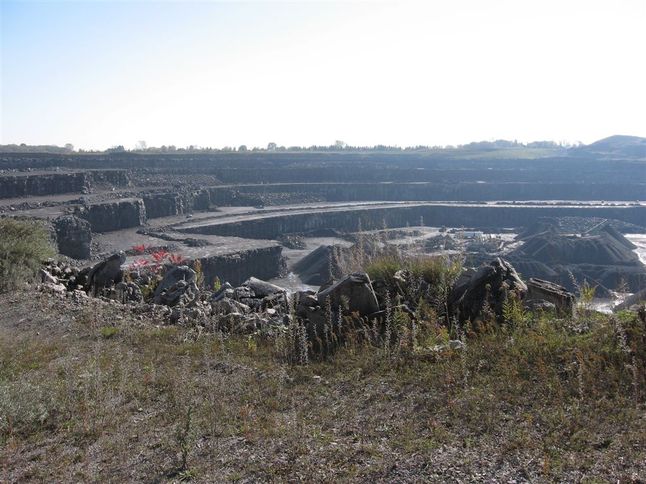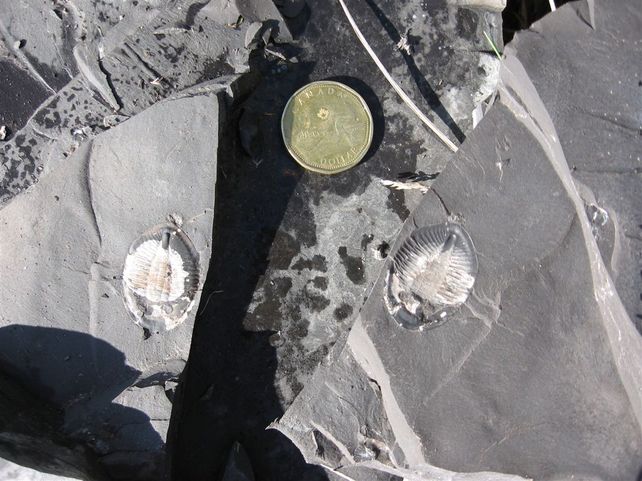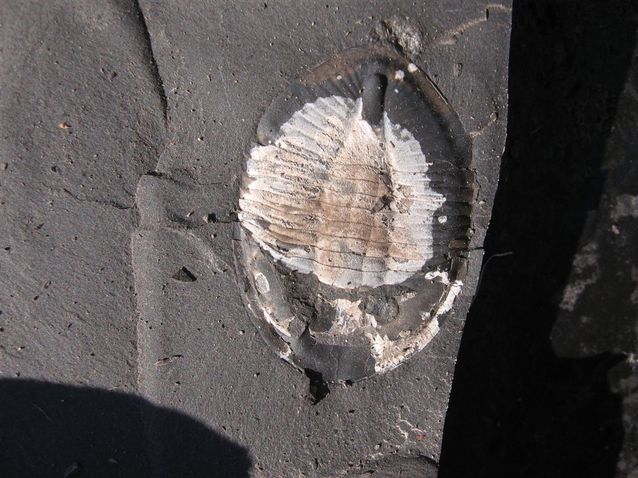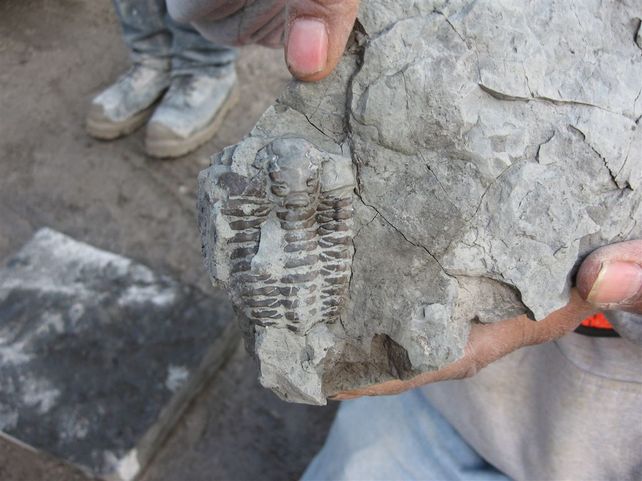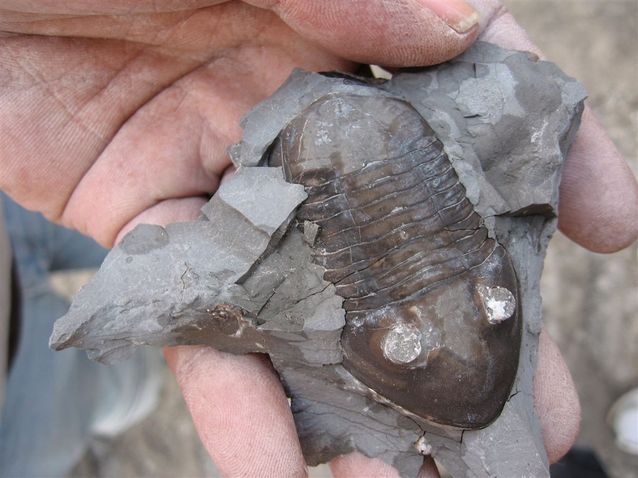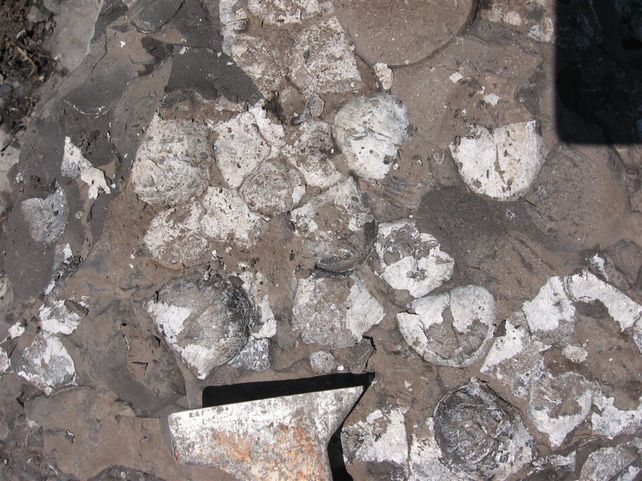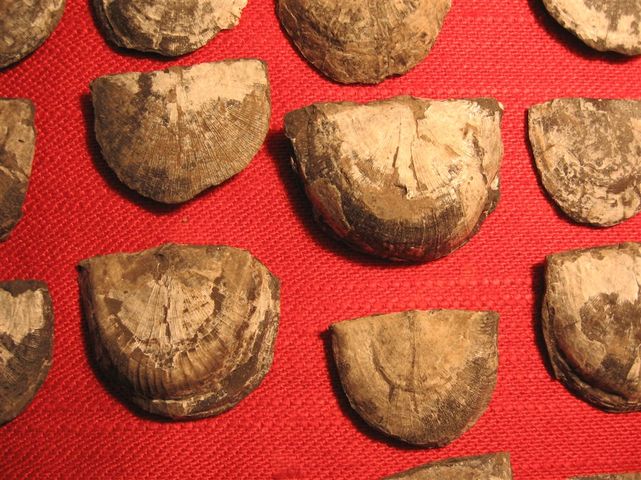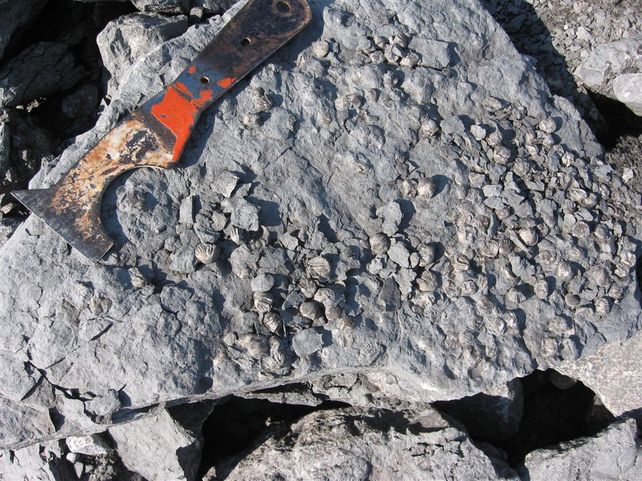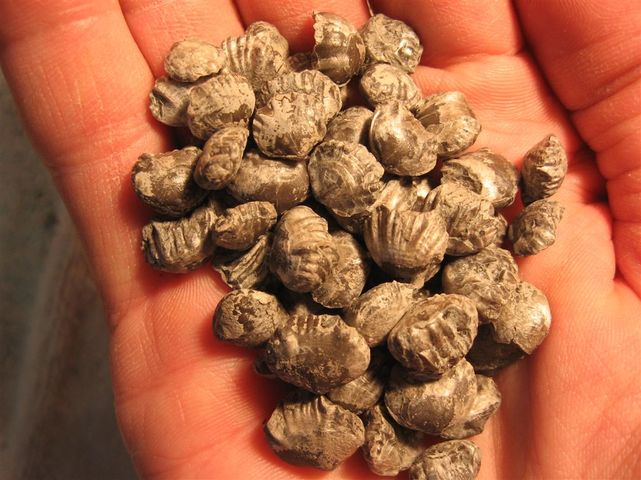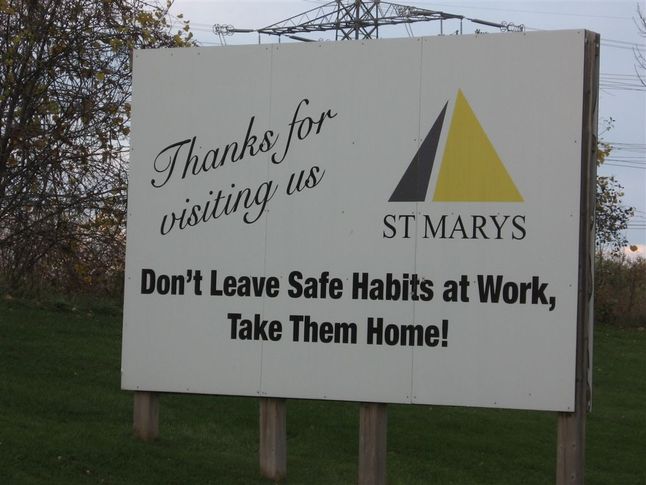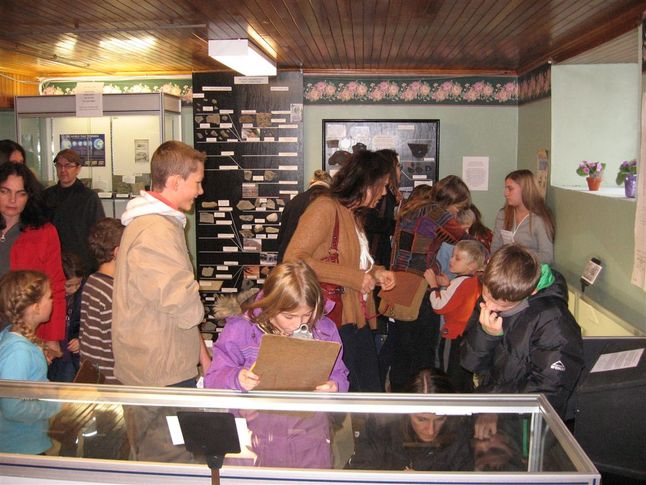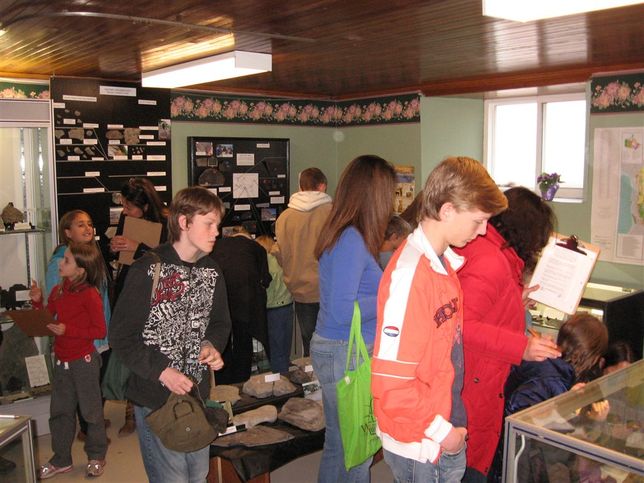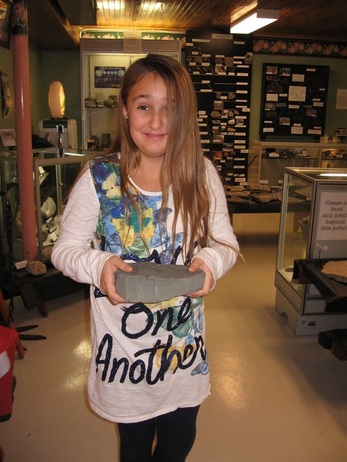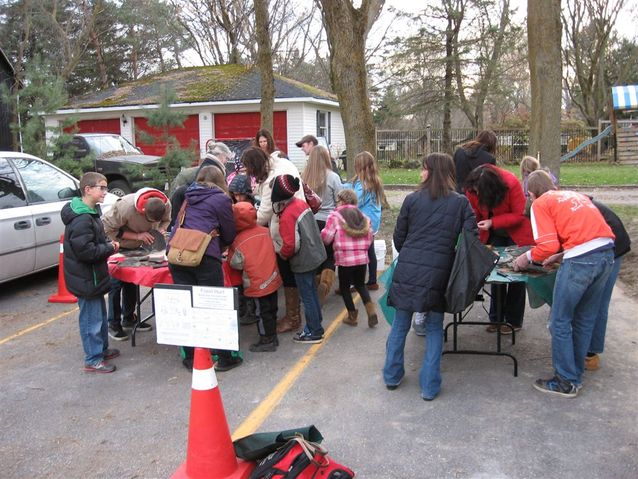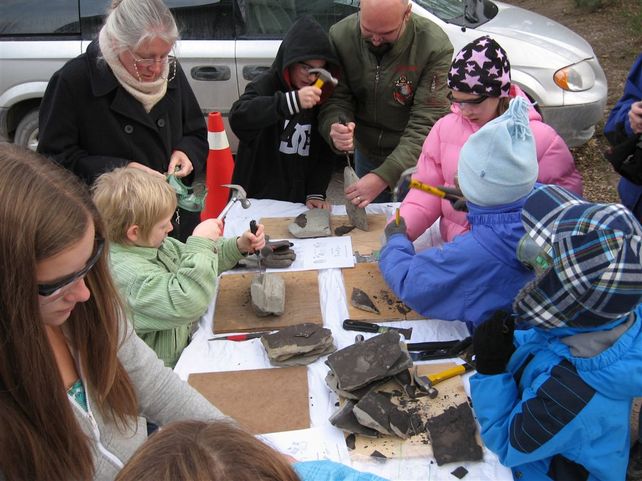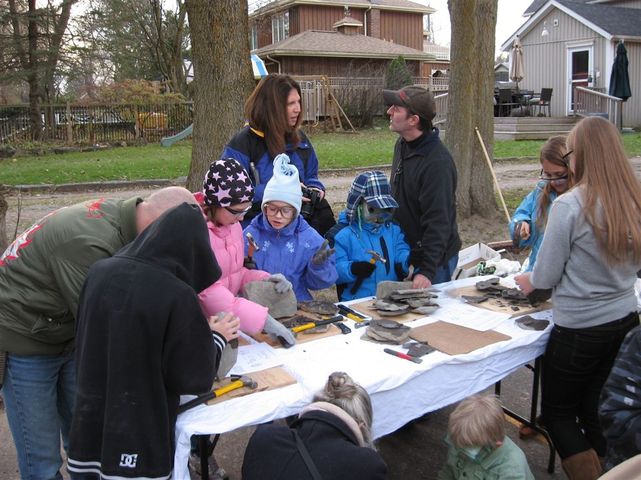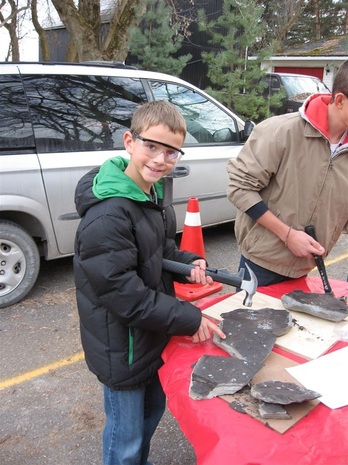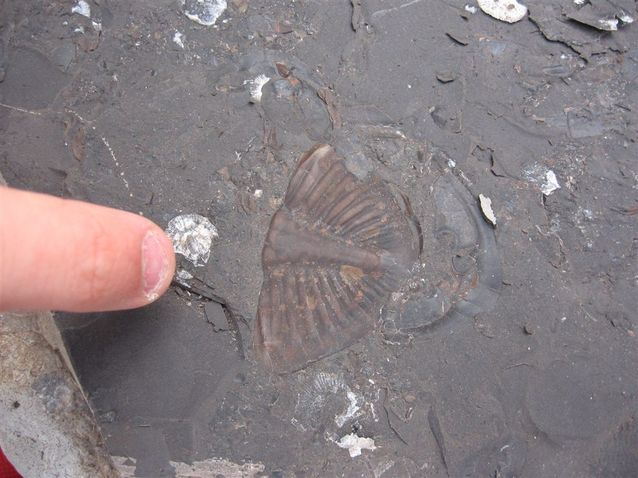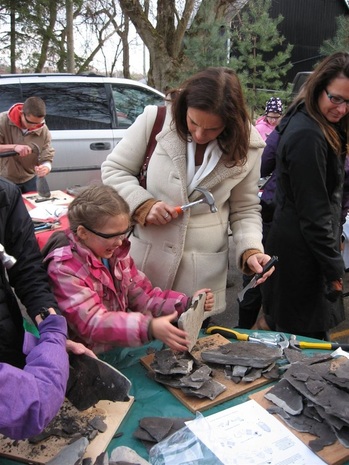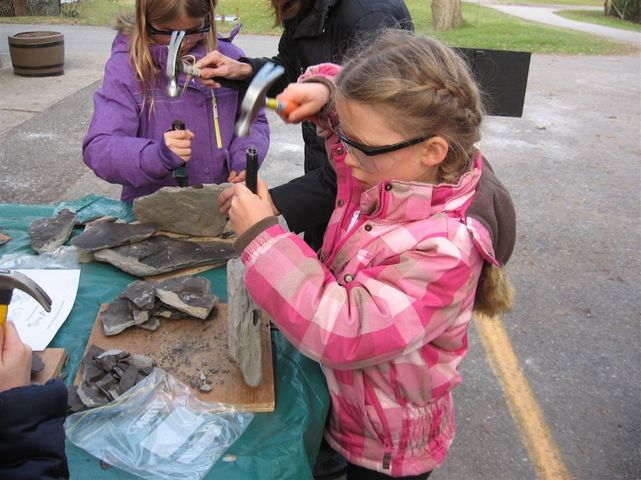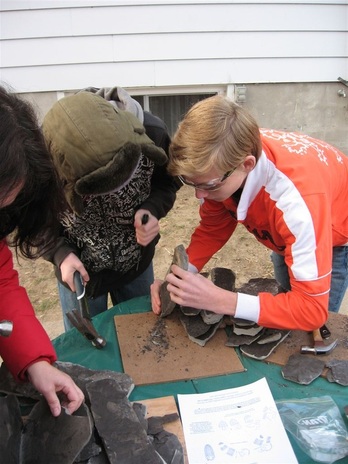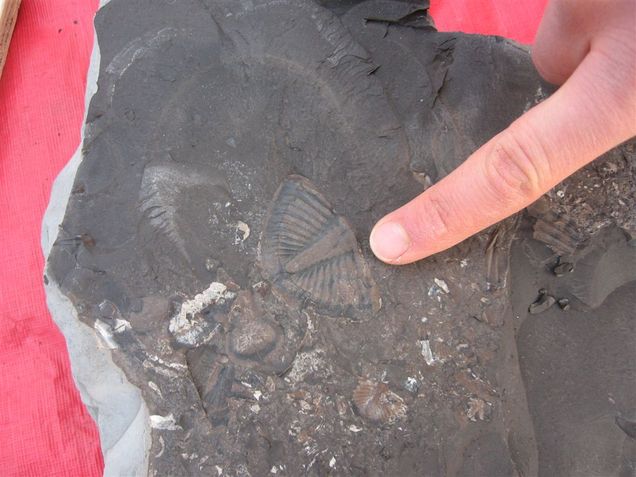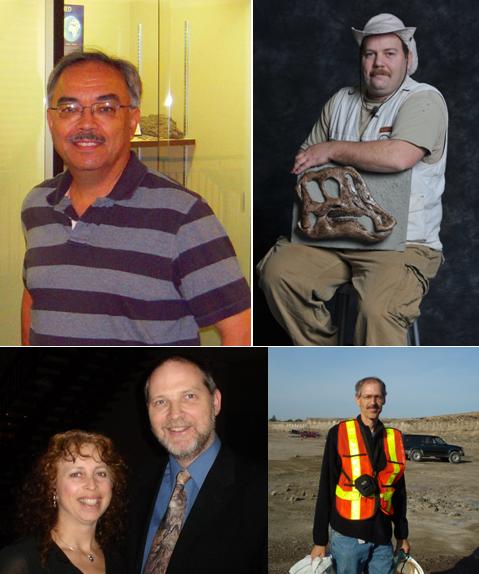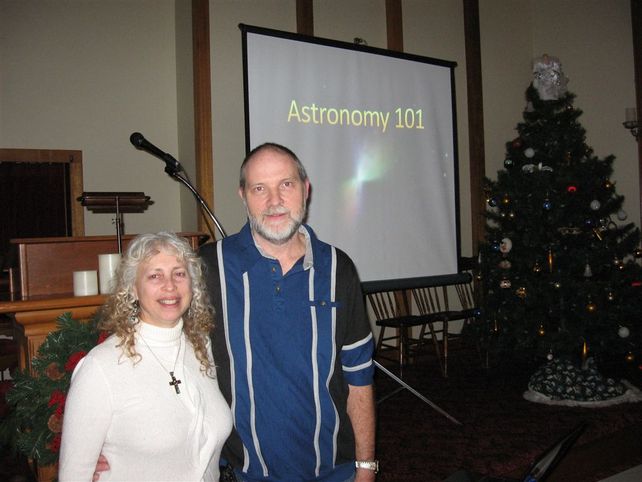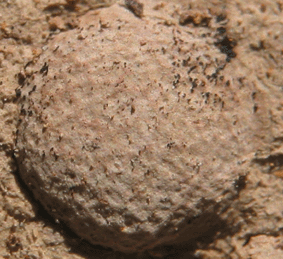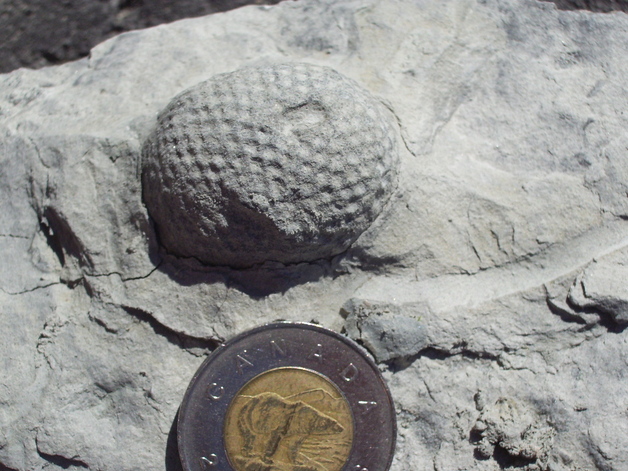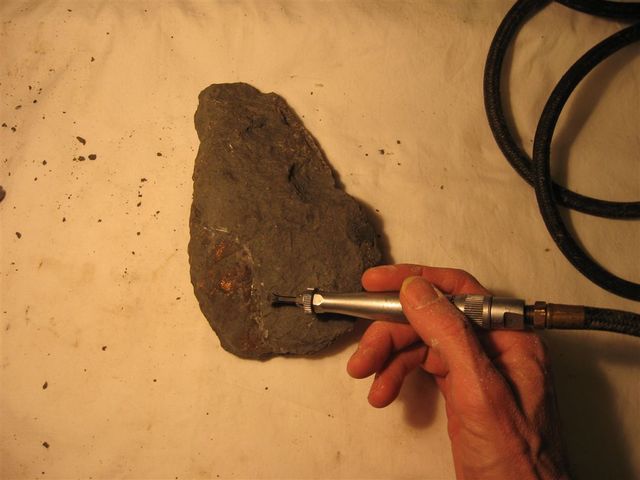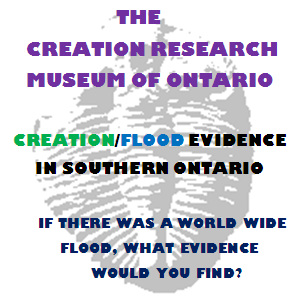WINTER 2014 NEWSLETTER
Isaiah 54
9 “To me this is like the days of Noah, when I swore that the waters of Noah would never again cover the earth.
So now I have sworn not to be angry with you, never to rebuke you again.
10 Though the mountains be shaken and the hills be removed, yet my unfailing love for you will not be shaken
nor my covenant of peace be removed,” says the Lord, who has compassion on you.
9 “To me this is like the days of Noah, when I swore that the waters of Noah would never again cover the earth.
So now I have sworn not to be angry with you, never to rebuke you again.
10 Though the mountains be shaken and the hills be removed, yet my unfailing love for you will not be shaken
nor my covenant of peace be removed,” says the Lord, who has compassion on you.
2013 could be known at the year of the tours for the Creation Research Museum of Ontario.
With the museum being well established word is now getting out. Here are some events that happened in the fall.
With the museum being well established word is now getting out. Here are some events that happened in the fall.
October 11th Tour
It was excellent weather for this October 11th homeschooling tour.
It was excellent weather for this October 11th homeschooling tour.
Kids were able to split open slabs of oil shale and locate and identify fossils. Different fossils
were found on this particular tour.
were found on this particular tour.
A great slab of brachiopods were found with some of the original shell intact.
One little girl went home with an amazing and rare webbed graptolite.
An encouraging comment after the tour.....
Thank you so much for your devotion. We all had a great time and learned a lot.
God bless, Ann
Thank you so much for your devotion. We all had a great time and learned a lot.
God bless, Ann
Public High School Meetings
The LORD seems to be widening the influence of our Ontario Museum's creation and catastrophe message with the first ever museum public school tour in Spring. Likewise later in October Martin Legemaate had an opportunity to speak at a local public high school to a group of students for 3 sessions. The power point presentation was called, "The History of the Theory of Evolution, What Went Wrong?". The student led group that sponsored Martin is called G.A.S.P. (God and Student Partnership). 14 student packets consisting of Creation Research evidence brochures DVDs and CDs were taken by students interested in knowing more. Pray for bold student groups such as G.A.S.P. as they try to navigate through an evolutionary saturated environment. support Creation Research as materials are provided free to the public forums.
The LORD seems to be widening the influence of our Ontario Museum's creation and catastrophe message with the first ever museum public school tour in Spring. Likewise later in October Martin Legemaate had an opportunity to speak at a local public high school to a group of students for 3 sessions. The power point presentation was called, "The History of the Theory of Evolution, What Went Wrong?". The student led group that sponsored Martin is called G.A.S.P. (God and Student Partnership). 14 student packets consisting of Creation Research evidence brochures DVDs and CDs were taken by students interested in knowing more. Pray for bold student groups such as G.A.S.P. as they try to navigate through an evolutionary saturated environment. support Creation Research as materials are provided free to the public forums.
Abby Stover, G.A.S.P. Leader and Martin Legemaate, in a public high school classroom just before starting the 3rd session
Here's what Abby and others had to say about the presentations.
I enjoyed the PowerPoint. Technology is not my forte so I definitely understand where you are coming from!!
The pictures really broke things up and were very nice additions. We love pictures!
The hand outs at the beginning got us focused on what you were going to speak on as well.
Thank you for coming in once again. We look forward to seeing you next week,
Abby
I thought it went well, you explained things pretty good and the fact that you gave visuals helps a lot.
The cases you are making are very strong and you got me interested in creation vs evolution a bit too.
We are glad to have you at GASP for these presentations.
Josiah
I enjoyed the PowerPoint. Technology is not my forte so I definitely understand where you are coming from!!
The pictures really broke things up and were very nice additions. We love pictures!
The hand outs at the beginning got us focused on what you were going to speak on as well.
Thank you for coming in once again. We look forward to seeing you next week,
Abby
I thought it went well, you explained things pretty good and the fact that you gave visuals helps a lot.
The cases you are making are very strong and you got me interested in creation vs evolution a bit too.
We are glad to have you at GASP for these presentations.
Josiah
New Displays
Two used display cases purchased at an auction in October.
See the restoration process of former display cases, the set up and where they went.
http://creationresearchontario.weebly.com/new-displays.html
Two used display cases purchased at an auction in October.
See the restoration process of former display cases, the set up and where they went.
http://creationresearchontario.weebly.com/new-displays.html
What is this fossil and how do you collect it?
Find out in the third fossil collecting tips article. Click:
http://creationresearchontario.weebly.com/fossil-collecting-tips.html
Find out in the third fossil collecting tips article. Click:
http://creationresearchontario.weebly.com/fossil-collecting-tips.html
Recent Ontario Quarry Research
St.Marys Quarry, Bowmanville Ontario Oct. 20th 2013
We're very grateful to some quarry managers that still allow the public into working quarries to collect fossils but they are getting few and far between. St. Marys is a particularly large quarry that crushes the limestone to produce cement. It cuts into the rocks of the Upper and Middle Ordovician spanning supposed millions of years.
St.Marys Quarry, Bowmanville Ontario Oct. 20th 2013
We're very grateful to some quarry managers that still allow the public into working quarries to collect fossils but they are getting few and far between. St. Marys is a particularly large quarry that crushes the limestone to produce cement. It cuts into the rocks of the Upper and Middle Ordovician spanning supposed millions of years.
Early in the morning with excellent weather, collectors from several fossil clubs preparing for a good day’s dig
Martin Legemaate on the first bench pointing to the Upper and Middle Ordovician Boundary.
Words like Ordovician, Silurian and Devonian have nothing to do with millions of years, rather
the rocks were named that way because they are similar and contain similar fossils as the originally
named ones. For example Devonian was the name given to rocks first studied in Devon England.
Words like Ordovician, Silurian and Devonian have nothing to do with millions of years, rather
the rocks were named that way because they are similar and contain similar fossils as the originally
named ones. For example Devonian was the name given to rocks first studied in Devon England.
Middle of hammer giving a closer look at the Boundary. The top half is the Whitby Shale. It is a black oil shale
that can easily be split into sheets with little effort. The presence of oil indicates this rock was laid down quickly.
The bottom half is the Cobourg Formation consisting of nodular limestone.
that can easily be split into sheets with little effort. The presence of oil indicates this rock was laid down quickly.
The bottom half is the Cobourg Formation consisting of nodular limestone.
Easily split sheets of Whitby Oil Shale loaded with fossils
Looking below into the rest of the quarry.
This is an important place for fossil collectors because many trilobite varieties can be found here.
Here are just a few that were found on this dig.
This is an important place for fossil collectors because many trilobite varieties can be found here.
Here are just a few that were found on this dig.
Positive and negative impression of the trilobite Pseudogygities
Positive impression of the trilobite Pseudogygities
Trilobite Flexicalymene
Trilobite Isotelus
Apart from finding great trilobites that day some amazingly preserved brachiopods (shells) were found in the top of the quarry and all the way down in the bottom defying evolution’s slow burial model. Parts of the shell were still intact. Taphonomists (people who study disintegration and fossilization) have found that modern shells can disintegrate in weeks to months*. These brachiopods must have been buried quick and deep to be so well preserved. They were also found in piles indicating they were washed in by the sorting power of water.
Brachiopod (Rafinequina) slab found in the upper part of the quarry (Whitby Oil Shale)
After preparation. Note the pearly shell preservation
Close up of preservation
Brachiopod (Camerella) slab found in the lowest part of the quarry (Cobourg Formation)
After removing and cleaning. Both sides are intact. Note also the pearly shine.
Conclusion
There was no evidence of slow burying processes here due to shell preservation, rather creatures (as in the brachiopods) were washed into piles and buried quickly and deeply. No evidence of millions and millions of years!
*Examples of post-mortality alteration in Recent brachiopod shells and (paleo) ecological consequences,
C.C. Emig, Marine Biology 104, Issue 2, pp 233-238 (1990)
There was no evidence of slow burying processes here due to shell preservation, rather creatures (as in the brachiopods) were washed into piles and buried quickly and deeply. No evidence of millions and millions of years!
*Examples of post-mortality alteration in Recent brachiopod shells and (paleo) ecological consequences,
C.C. Emig, Marine Biology 104, Issue 2, pp 233-238 (1990)
November 11th Tour
The largest of the museum fall tours for 2013 was the CHEN homeschooling group
(Christian Home Educators Connection) on November 15th.
The largest of the museum fall tours for 2013 was the CHEN homeschooling group
(Christian Home Educators Connection) on November 15th.
After a class on fossils 101 the group checked out the displays.
As usual the kids could win some fossils by going around and and filling in answers to questions on a sheet
about evidence that are in the rocks for creation and catastrophe.
about evidence that are in the rocks for creation and catastrophe.
Congratulations to Mary who's sheet was drawn from a bucket and therefore won the fossil clam
and the accompanying vertical burrow. Both evidence of rapid fossilization!
and the accompanying vertical burrow. Both evidence of rapid fossilization!
After looking at fossils now it's time to go outside where folks can search for their own fossils.
Eager folks looking for fossils with pretty good weather for a November day.
Matching up their fossil finds with the fossil illustrations on the sheet.
Josiah points to a great find. A trilobite tail surrounded by brachiopods
Close up of the trilobite tail.
Colleen with Peggy trying balance the slab in order to split open along the seams.
Abbey and Colleen getting pretty good with the hammer now.
The kids were asked to smell the rock after it was split open and they were amazed at the oily scent.
The presence of oil indicates a quick burial of plants and animals. Catastrophic evidence that was
seen in all the museum displays viewed today.
The presence of oil indicates a quick burial of plants and animals. Catastrophic evidence that was
seen in all the museum displays viewed today.
Jacob also pointing to his find of the day.
Another excellent tail and other trilobite bits.
FALL FOLLOW-UP CLASSES
The fall follow-up classes to the Spring Creation Weekend Event were excellent.
Thanks to Frank and Carol Brandon for their interesting presentations and for their faithfulness.
Pray for them as they hope to move toward a full time speaking ministry.
Carol Writes....
The Creation Small Group in the Fall of 2013 was run as a follow-up to the Creation Weekend held in Apr. 2013 at Goodwood Baptist Church. It was held over seven Sunday evenings at the church, for two hours a night. Most nights there were the faithful few in attendance; some other people came for just a few sessions as they couldn't commit to all of them.
The presentations were a mix of PowerPoint and DVDs, with opportunity for discussion. A quick overview was given, at a layman’s level, of the following topics: an introduction of why the issue of creation/evolution matters, biology – can natural selections and mutations explain the world around us?, dating methods and Mount St. Helens, the Flood and the Ice Age, the fossil record & ape-men, dinosaurs and the Bible, and astronomy.
Comments about the study:
“I wanted to thank you for all the work you put in for the talks at the church as I have found them to be very helpful and inspirational. Creation is an area of theology that I hadn't considered before and I am now very interested in studying it more so I thank you for that.” from J.N.
M.B. and L.B. found that they were sharing what they learned with those at their work each week. One of their co-workers routinely asked what the topic had been the night before and was interested in what had been shared with them.
Carol and Frank on the final session.
Read the latest Creation Research print newsletter.
If you only get Creation Research's electronic news, the print news is different.
See the latest on research, ministry, and personnel, for 2013 and don’t forget to pray much.
Click on the downloadable file.
If you only get Creation Research's electronic news, the print news is different.
See the latest on research, ministry, and personnel, for 2013 and don’t forget to pray much.
Click on the downloadable file.
| cn_newsletter_27_no_4.pdf | |
| File Size: | 1089 kb |
| File Type: | |
Fossil Golf Ball?
Mystery Solved!
Mystery Solved!
On a Creation Research dinosaur dig back in 2004 in Montana USA John Mackay collected a fossil looking much like a golf ball complete with dimples! It was not known what it was at the time and remained a mystery for many years. We believe the mystery is now solved when recently our Canadian Rep. and fossil guy Martin Legemaate came across similar fossils collected in Ontario.
Golf ball like fossil found in Montana
Bulbous algae (Cyclocrinites globosus) found in Ontario. Photo courtesy of Kevin Kidd.
In the photo is the largest one of many (30 mm) collected in Ontario by Martin's colleague Kevin Kidd and are considered to be Bulbous algae called cyclocrinites*. They were all found in Middle Ordovician rocks. John's was found in Cretaceous. If you believe in evolution and millions of years you would have to conclude that bulbous algae exhibits stasis (no change) because there is a 300 million year time span between the Ordovician and Cretaceous rocks. They are even found in Cambrian rocks adding another half a million years.** To make things worse for the evolutionist the cyclocrinites still exist today as their modern cousins the dasyclad algae. These marine (salt water) plants** live in waters up to 90 meters deep*. All we see so far is algae turning into algae. Genesis calls this "Producing after their own kind". This find further broadens the land and marine mix found at the Montana site to now include algae. This is clearly a large scale flood deposit to be able to mix algae and clams with trees and dinosaurs! Evolution's slow burial is just not in the rocks!
*REF. South- Central Ontario Fossils, William A. Hessin 2009
**REF. First non-calcified dasycladalean alga from the Carboniferous Lyall L. Anderson (2009) N.Jb. Geol. Palaeont. Abh. vol. 251/1, p. 119-128 Stuttgart
*REF. South- Central Ontario Fossils, William A. Hessin 2009
**REF. First non-calcified dasycladalean alga from the Carboniferous Lyall L. Anderson (2009) N.Jb. Geol. Palaeont. Abh. vol. 251/1, p. 119-128 Stuttgart
Photo of living algae (Bornetella sphaerica). Collected on the Ryukyu Islands (Japan) Photo courtesy of Sigrid Berger*
*Prof. Dr. Sigrid Berger-Seidel Ruprecht-Karls-Universität COS Plant Cell Biology INF 230 69120 Heidelberg
*Prof. Dr. Sigrid Berger-Seidel Ruprecht-Karls-Universität COS Plant Cell Biology INF 230 69120 Heidelberg
Fossil Preparation Lab Update
More progress toward a museum fossil prep lab with the purchase of a air scribe in December. What is an air scribe?
It's like a mini jack hammer that chips the rock away from the fossil which prepares the way
for the finer detailing of the air abrasive blasting. To see the progress on the prep lab and to
watch an air scribe demonstration visit the
FOSSIL PREPARATION PAGE
More progress toward a museum fossil prep lab with the purchase of a air scribe in December. What is an air scribe?
It's like a mini jack hammer that chips the rock away from the fossil which prepares the way
for the finer detailing of the air abrasive blasting. To see the progress on the prep lab and to
watch an air scribe demonstration visit the
FOSSIL PREPARATION PAGE
Newly purchased fossil prep device, an air scribe
Supplementary Update
John Mackay was scheduled to be in Ontario in Spring but
regretfully that will be postponed to a later date.
Check the museum HOME PAGE for updates.
John Mackay was scheduled to be in Ontario in Spring but
regretfully that will be postponed to a later date.
Check the museum HOME PAGE for updates.
